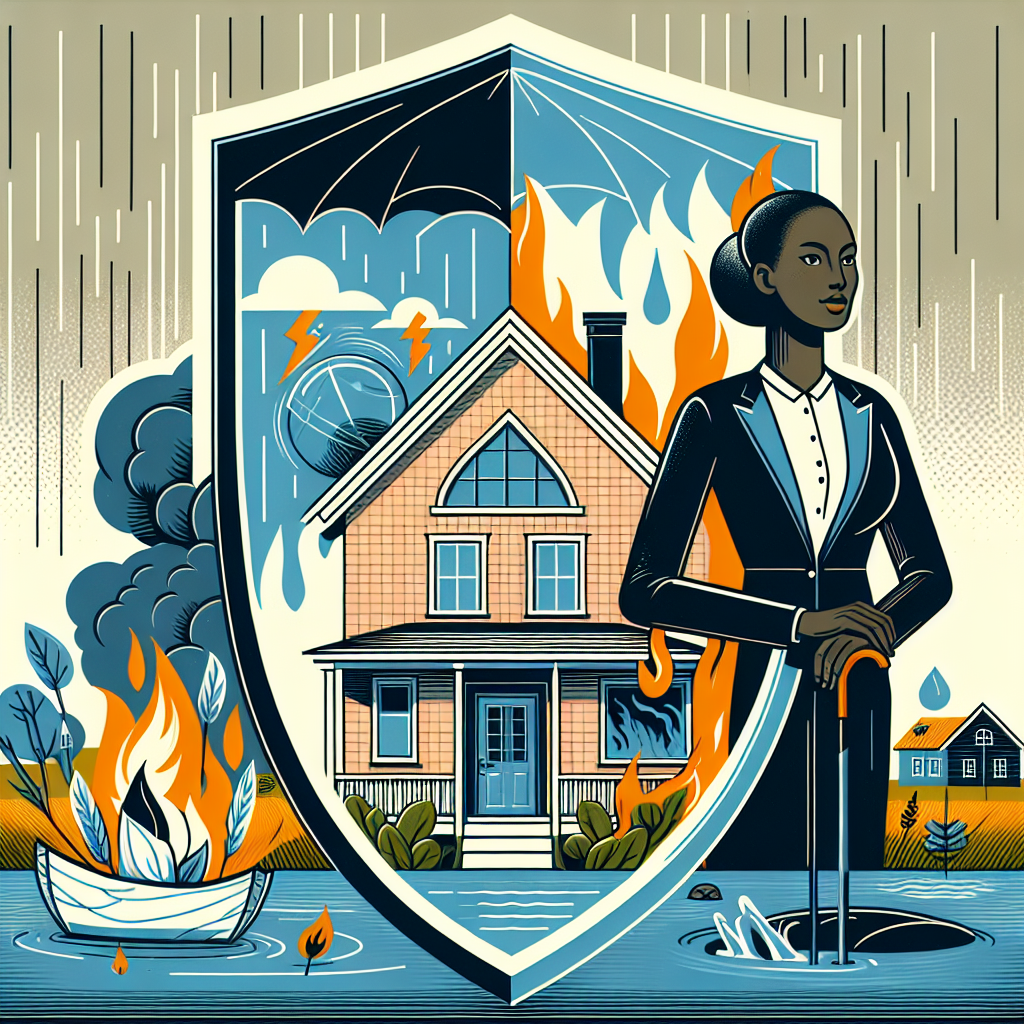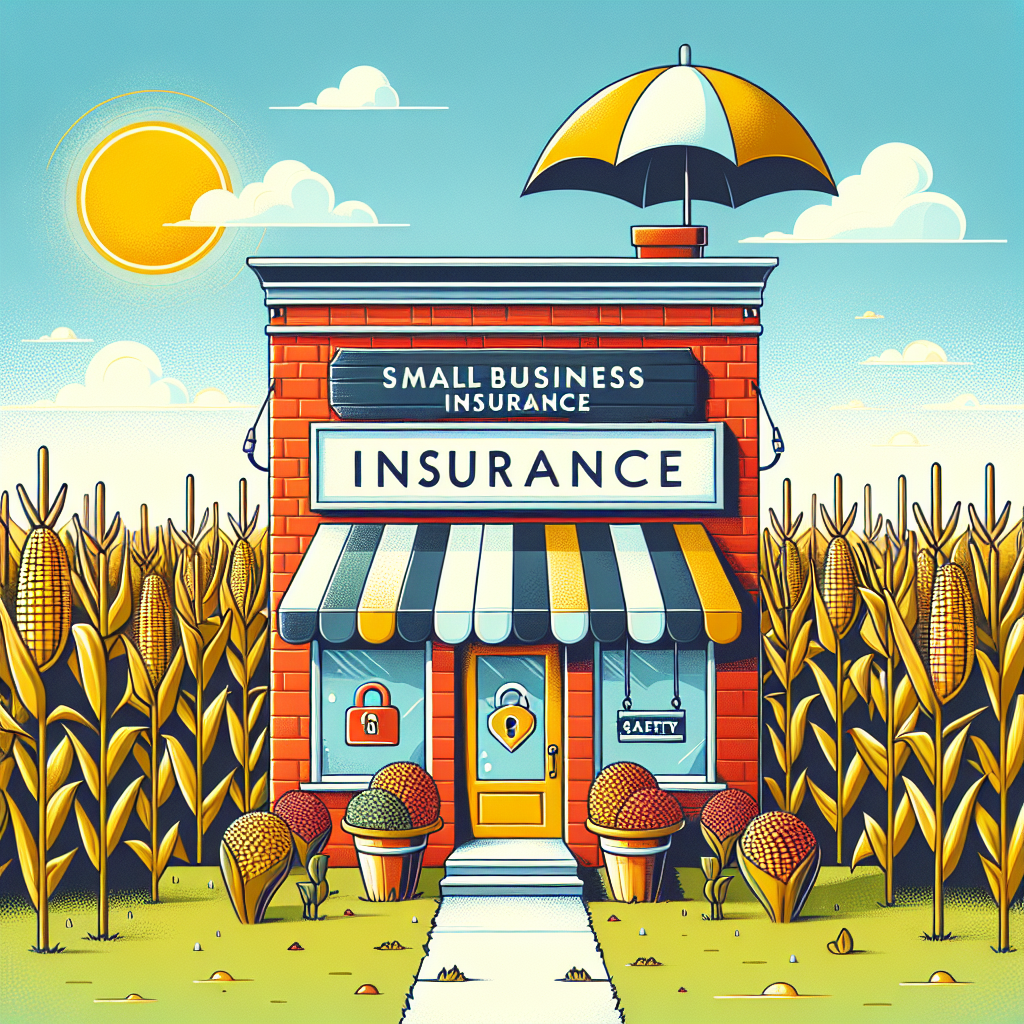Filed under Home Insurance on
Liability Coverage in Home Insurance Explained

Your home is the place you welcome friends, host celebrations, and live everyday life. It is also where accidents can happen. A visitor slips on a wet step, your child’s errant baseball breaks a neighbor’s window, or your dog knocks someone over at the park. What protects your finances when an incident leads to injury or damage? That is where liability coverage in home insurance becomes essential. Understanding how it works can help you select the right limits, avoid costly gaps, and respond confidently when the unexpected occurs.
What Is Liability Coverage and Why It Matters
At its core, personal liability coverage protects you when you or members of your household are legally responsible for bodily injury or property damage to others. It pays covered damages up to your policy limit and typically provides a legal defense if you are sued, even if the claim is groundless. While your homeowners policy protects your house and belongings, liability coverage in home insurance shields your savings, income, and future from potentially large judgments or settlements.
Homeowners are often surprised by how quickly a seemingly minor accident can escalate into a serious claim. Medical care is expensive. Litigation is more common. Jury awards, propelled by what insurers call “social inflation,” have trended upward over the past decade. In that environment, robust liability limits are not a luxury; they are a financial backstop.
What Liability Coverage Usually Includes
Although policies vary, most standard homeowners policies include several important liability protections:
- Bodily injury liability: Pays when you are legally liable for injury to others, such as a guest who trips on a loose rug or a delivery driver who slips on ice you failed to treat.
- Property damage liability: Covers accidental damage to someone else’s property, like a backyard fire that spreads to a neighbor’s fence.
- Legal defense: Your insurer hires and pays attorneys to defend you, generally at no cost to you and often outside your policy limits, though this can vary by carrier.
- Medical payments to others: A no-fault feature that pays limited medical bills for minor injuries to guests, typically $1,000 to $5,000, to help prevent small issues from becoming big disputes.
- Personal injury (when endorsed or included): Coverage for offenses like libel, slander, or wrongful eviction. Some policies include this, others require an add-on.
Remember, this coverage is designed to protect you from claims brought by others. It does not pay for your own injuries or your family’s belongings; other parts of your policy address those needs.
How Liability Coverage Works in Real Life
Consider three common scenarios:
- Slip-and-fall: A neighbor visits, slips on your icy walkway, and fractures a wrist. Liability coverage in home insurance can cover medical costs, lost wages, and your legal defense if a lawsuit follows.
- Off-premises accident: Your child breaks a school window during a weekend game. Personal liability typically follows you worldwide and may cover the damage, subject to exclusions.
- Dog-related injuries: Your dog knocks down a jogger in a public park. If you are considered negligent, your policy may respond. Note some carriers exclude certain breeds or apply sublimits.
In each example, the insurer investigates, determines fault, appoints counsel if needed, and pays covered damages up to your limit. You are responsible for amounts above that limit—one reason many homeowners pair their policy with an umbrella policy for added protection.
What’s Not Covered: Key Exclusions to Know
Liability coverage is broad, but not unlimited. Common exclusions include:
- Intentional acts: Harm you cause on purpose is not covered.
- Business activities: Running a business from home, including short-term rentals, often requires special endorsements or a separate policy.
- Motor vehicles: Auto-related liability is excluded; you need an auto policy. E-bikes, scooters, and recreational vehicles occupy a gray area—ask your agent how your policy treats them.
- Watercraft: Only small boats may be covered; larger or faster craft typically need their own coverage or an endorsement.
- Professional services: Advice or services you are paid to provide are not covered under a homeowners policy.
- Household injuries: Injuries to you or residents of your household are not covered by liability; medical, health, or disability policies address those.
Insurers also increasingly use sublimits for certain exposures. For example, animal liability may be capped at a lower amount than your overall liability limit, or specific dog breeds may be excluded. Trampolines, unfenced pools, and aggressive social hosting may trigger underwriting restrictions or higher premiums. Always review your declarations page and endorsements; these details matter.
How Much Liability Coverage Should You Carry?
Standard homeowners policies often start at $100,000 in personal liability coverage. Many experts now recommend at least $300,000 to $500,000, given the rising cost of claims. A prudent benchmark is to carry enough to protect your net worth and future earnings—what a plaintiff might realistically pursue in a severe case.
When determining your limit, consider:
- Your assets: Savings, investments, home equity, and other property in your name.
- Your future income: Higher earners may be more attractive targets for litigation, and judgments can sometimes result in wage garnishments.
- Risk factors at home: Pools, trampolines, dogs, frequent gatherings, and steep stairways all increase exposure.
- Your lifestyle: Volunteer work, coaching youth sports, or HOA board service may warrant higher protection, though some roles carry separate protections.
- Local legal climate: Certain jurisdictions see higher verdicts, faster litigation, and larger settlements.
If your risk profile is above average, raising your base limit and adding an umbrella policy is often the most cost-effective approach.
Umbrella Insurance: Extra Protection for Big Claims
An umbrella policy sits on top of your home and auto liability, providing $1 million or more of additional coverage once those underlying limits are exhausted. In many regions, an additional $1 million can cost about what a daily cup of coffee does per month, with typical annual premiums commonly a few hundred dollars depending on your household profile. Umbrellas also often expand coverage to include personal injury claims that may be limited or excluded in a standard homeowners policy.
Consider an umbrella if you:
- Own significant assets or have high income.
- Have a pool, host frequent gatherings, or own dogs.
- Have teen drivers in the household (an auto-related risk, but umbrellas span both home and auto).
- Serve on boards, volunteer, or travel extensively.
Your insurer will require minimum underlying liability limits on your home and auto policies—often $300,000 on home and $250,000/$500,000 on auto. Meeting these requirements helps ensure the umbrella responds when needed.
Industry Trends Affecting Liability Claims
Several forces are reshaping liability risk for homeowners:
- Social inflation: Expanded views of liability, higher medical costs, and litigation funding have contributed to larger verdicts and settlements.
- Dog bite severity: Industry data shows average payouts for dog-related claims have climbed substantially over the past decade, often exceeding $60,000 per claim in recent years.
- E-mobility growth: E-bikes and scooters are increasingly common, but liability coverage for them varies by policy and local law.
- Short-term rentals: Hosting can convert personal exposures into business exposures, which many homeowners policies exclude without specific endorsements.
- Online reputation risks: Social media increases the chance of libel and slander disputes; personal injury endorsements or umbrella policies can address this.
Given these trends, reviewing your coverage annually is smart. Insurers adjust underwriting and pricing as loss data evolves, and what was adequate three years ago may not be sufficient today.
Liability Coverage vs. Property Coverage
It is easy to confuse liability coverage with the parts of your policy that repair your house or replace your belongings. The distinction is simple:
- Property coverages: Protect your dwelling, other structures, and personal property after covered perils like fire or theft.
- Liability coverages: Protect your finances when you are responsible for injuries or damage to others.
Both are crucial, but they serve different roles. If you have to choose where to invest a few extra premium dollars, increasing liability limits is often highly cost-effective compared to the potential risk of a large claim.
Common Myths, Clarified
- Myth: Liability only applies on my property. Reality: Most policies cover you worldwide for personal liability, subject to exclusions.
- Myth: Medical payments covers me and my family. Reality: It is designed to pay small medical bills for guests, regardless of fault.
- Myth: If it is an accident, it is covered. Reality: Business activities, vehicles, and certain dog-related incidents might be excluded without endorsements.
- Myth: Defense costs always reduce my limit. Reality: Many policies cover defense outside the liability limit, though wording varies by insurer.
Endorsements and Options to Consider
To tailor your protection, discuss these add-ons with your agent or broker:
- Increased liability limits: Raising from $100,000 to $500,000 is usually inexpensive.
- Personal injury endorsement: Extends protection for libel, slander, and similar offenses if not already included.
- Animal liability coverage: Removes breed exclusions or raises sublimits, where available.
- Home business or incidental occupancy: Addresses liability for sales, online ventures, tutoring, or workshops at home.
- Watercraft liability: Adds coverage for boats beyond basic policy allowances.
- Short-term rental endorsement: Clarifies coverage when hosting travelers.
Because policies differ, a quick annual review with your advisor can catch life changes—new pets, renovations, side businesses—that could alter your liability needs.
Special Situations: Condos, Landlords, and Renters
Liability concepts apply across living arrangements, but details differ:
- Condo owners: An HO-6 policy covers your personal liability. The condo association’s master policy covers common areas but not your personal exposures. Make sure your personal injury coverage aligns with your lifestyle.
- Landlords: A dwelling or landlord policy typically includes premises liability related to tenant injuries. If you allow pets or provide amenities like pools or gyms, confirm how the policy handles those risks.
- Renters: Renters insurance includes personal liability similar to homeowners policies, often at a very reasonable cost. It is an essential safety net for anyone leasing a home or apartment.
What to Do After an Incident
How you respond in the first hours after an accident can influence the outcome. Consider these steps:
- Care for the injured: Call emergency services if needed and provide basic first aid.
- Avoid admitting fault: Stick to facts. Let the insurer investigate and determine liability.
- Document the scene: Take photos, note conditions (weather, lighting), and gather witness names.
- Notify your insurer: Report potential claims promptly, even if you are unsure it will escalate.
- Preserve evidence: Keep damaged items and notes until the claim is resolved.
- Cooperate with defense: If a lawsuit is filed, your insurer will appoint counsel—respond promptly and follow guidance.
Practical Ways to Reduce Liability Risk
Insurers reward homeowners who reduce the likelihood of accidents. Risk control also protects the people who visit your home. Smart moves include:
- Maintain walkways: Repair loose handrails, fix uneven steps, and treat ice quickly.
- Light the way: Exterior lighting and motion sensors help prevent nighttime falls.
- Secure pools: Install proper fencing and self-latching gates; use pool alarms and safety covers.
- Pet protocols: Obedience training, secure fencing, and clear house rules for guests around pets.
- Host responsibly: Provide nonalcoholic options, arrange ride-shares, and discourage overconsumption.
- Declutter and childproof: Keep floors clear, anchor furniture, and secure rugs with non-slip pads.
- Contractor vetting: Use licensed, insured professionals and get certificates of insurance for major projects.
These steps can reduce accidents and strengthen your position should a claim arise.
How Much Does Liability Coverage Cost?
Increasing your liability limit is often one of the best values in a homeowners policy. Moving from $100,000 to $300,000 or $500,000 typically adds a modest amount to your premium compared to the protection it provides. Umbrella policies commonly start around a few hundred dollars annually for the first $1 million, with incremental costs for additional millions. Pricing depends on your location, claims history, household drivers, pets, and recreational items like boats or trampolines.
Because premiums vary widely, it pays to shop through a trusted agent or broker who can compare multiple carriers and identify any special underwriting requirements upfront.
How to Read the Liability Section of Your Policy
Your declarations page lists your limits and endorsements, but the policy form holds the details. Focus on:
- Coverage E (Personal Liability): The per-occurrence limit that applies to covered claims.
- Coverage F (Medical Payments): The no-fault medical limit for guests.
- Defense and supplementary payments: Whether defense costs are inside or outside your limits.
- Exclusions and conditions: Look for business exclusions, animal restrictions, and motor vehicle provisions.
- Endorsements: Added forms that modify coverage or apply sublimits.
If any language is unclear, ask your agent to walk through scenarios relevant to your household. A 15-minute conversation can prevent costly misunderstandings later.
Frequently Overlooked Off-Premises Exposures
Liability follows you, so think beyond your front door. A few often-missed risks include:
- Volunteer work: Coaching or event staffing might create exposures; confirm whether the organization provides liability protection.
- Borrowed spaces: If you rent a hall for a party, you might be asked for proof of insurance or a certificate of liability.
- Recreational activities: Pickup sports, drone flying, and community gardening can lead to accidental injuries or damage.
- Online activity: A careless social post could spark a defamation claim; personal injury coverage can help.
Checklist for Choosing the Right Liability Protection
- Take inventory of your assets and future income.
- List household risk factors: pets, pool, frequent guests, volunteer roles, e-bikes, or watercraft.
- Set a target limit: Often $300,000 to $500,000 as a baseline, plus an umbrella if warranted.
- Review exclusions and endorsements: Look closely at animal liability, business activities, and short-term rentals.
- Add personal injury coverage if your online presence or occupation increases reputational risk.
- Revisit annually and after life changes: New home, renovations, marriage, or a teen driver.
Clear Answers to Common Questions
Does liability coverage apply to my roommate or tenant?
Household residents related by blood or marriage are usually covered. Unrelated roommates may need their own renters policies. Tenants are not covered by your homeowners policy; landlords need a dwelling or landlord policy, and tenants should carry renters insurance.
Am I covered if I host a short-term rental occasionally?
Many insurers treat short-term rentals as a business exposure with limited or no coverage under a standard homeowners policy. Some carriers offer endorsements or specialized policies. Clarify this before hosting.
What about injuries from home renovations?
If a guest or contractor is injured, liability coverage might respond, but using licensed, insured professionals is crucial. Your insurer may require proof of contractor insurance for major projects.
Do I need liability coverage if I am careful and rarely have guests?
Accidents happen everywhere—on sidewalks, at parks, and during everyday activities. Liability coverage in home insurance protects you beyond your property lines. It is a baseline financial safeguard for nearly every household.
Bringing It All Together
Choosing the right liability coverage in home insurance is about aligning your protection with the real risks you face. Start by understanding the difference between property and liability coverage, review your exclusions, and consider endorsements that match your lifestyle. Then set a limit that reflects your assets and earning power, and use an umbrella policy to extend your safety net for severe events.
In today’s environment—characterized by higher medical costs, larger verdicts, and new everyday risks from e-mobility to online activity—the right liability strategy is a small investment with the potential to prevent life-altering financial loss. A short conversation with a knowledgeable agent, combined with sensible home safety practices, can help you sleep better at night.
Final Takeaways and Next Steps
- At minimum, consider $300,000 to $500,000 in personal liability, plus a $1 million umbrella if you have meaningful assets or elevated risk factors.
- Audit exclusions and sublimits yearly—especially for animals, watercraft, and home businesses.
- Ask about personal injury coverage to address libel and slander exposures.
- Invest in risk control: fix trip hazards, secure pools, and practice responsible hosting.
- Clarify off-premises exposures, from volunteer roles to e-bike use and short-term rentals.
Ultimately, liability coverage in home insurance is not just a policy term—it is the mechanism that defends your financial future when life goes off-script. With thoughtful limits, tailored endorsements, and an umbrella policy where appropriate, you can welcome guests, enjoy your community, and go about your day with confidence.
A Quick Recap of the Essentials
- What it is: Liability coverage pays for injuries or damage you cause to others and funds your legal defense.
- Where it applies: Typically on and off your property, subject to exclusions.
- What to watch: Exclusions for business use, vehicles, certain pets, and short-term rentals.
- How much to buy: Enough to cover your assets and future income, plus umbrella for added protection.
- How to save: Improve safety, bundle policies, and review coverage annually.
If you remember nothing else, remember this: liability coverage in home insurance is the part of your policy that stands between a single accident and years of financial fallout. Set it thoughtfully, review it regularly, and adjust as your life evolves.




